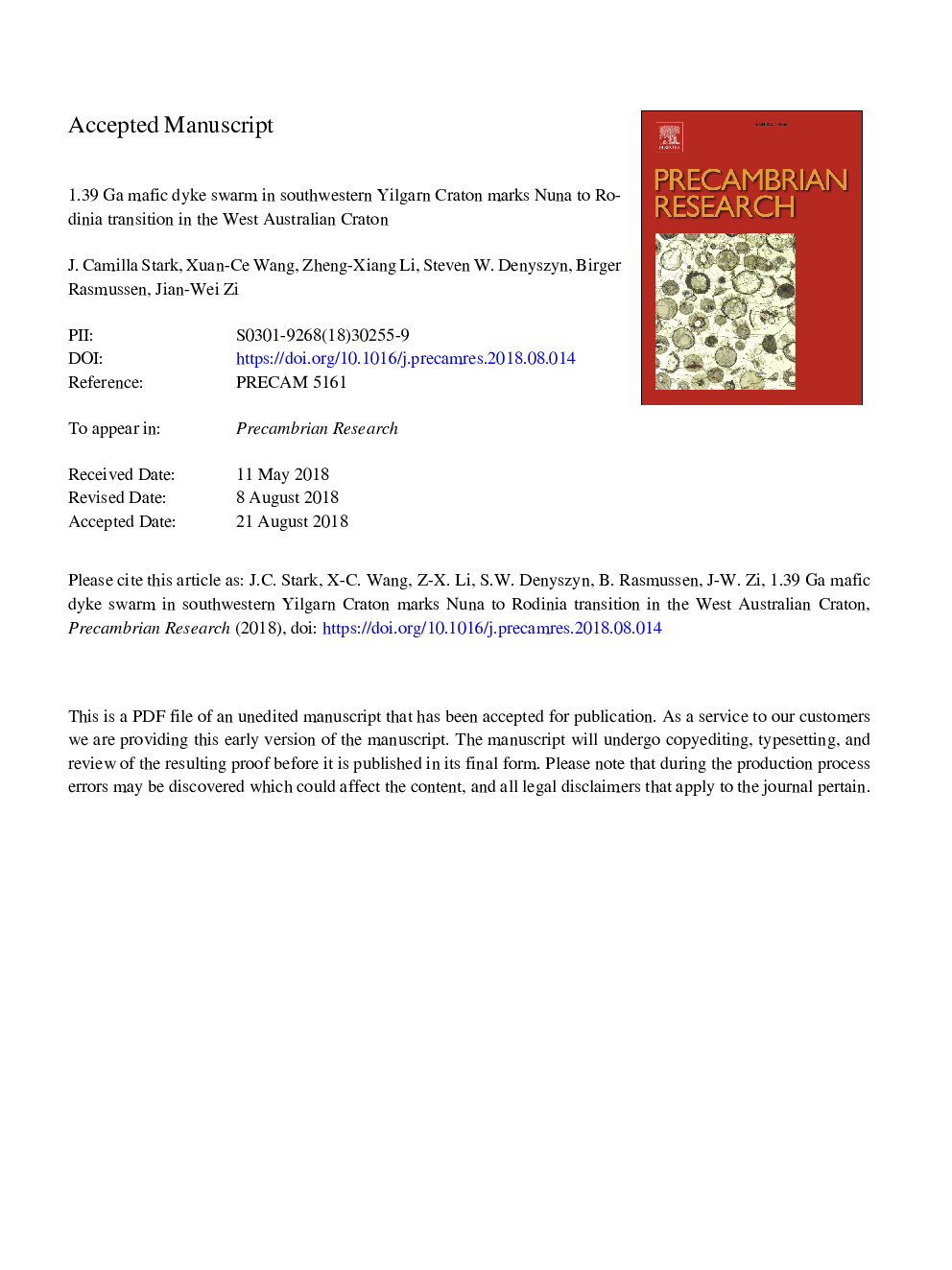| Article ID | Journal | Published Year | Pages | File Type |
|---|---|---|---|---|
| 10120708 | Precambrian Research | 2018 | 47 Pages |
Abstract
The Archean Yilgarn Craton in Western Australia hosts at least five generations of mafic dykes ranging from Archean to Neoproterozoic in age, including the craton-wide ca. 2408â¯Ma Widgiemooltha and the 1210â¯Ma Marnda Moorn Large Igneous Provinces (LIP), the 1888â¯Ma Boonadgin dykes in the southwest and the 1075â¯Ma Warakurna LIP in the northern part of the craton. We report here a newly identified NNW-trending mafic dyke swarm, here named the Biberkine dyke swarm, in the southwestern Yilgarn Craton dated at 1390â¯Â±â¯3â¯Ma by ID-TIMS U-Pb geochronology of baddeleyite. The regional extent of the dyke swarm is uncertain but aeromagnetic data suggest that the dykes are part of a linear swarm several hundred kilometers long, truncated by the Mesoproterozoic Albany-Fraser Orogen to the south. Geochemical data indicate that the dykes have tholeiitic compositions with a significant contribution from metasomatically enriched subcontinental lithospheric mantle and/or lower continental crust. Paleogeographic reconstructions suggest that a prolonged tectonic quiescence in the Yilgarn Craton from ca. 1600â¯Ma was interrupted by renewed subduction along the southern and southeastern margin at ca. 1400â¯Ma, reflecting a transition from Nuna to Rodinia configuration. The 1390â¯Ma Biberkine dykes may be a direct consequence of this transition and mark the change from a passive to active tectonic setting, which culminated in the Albany-Fraser Orogeny at ca. 1330â¯Ma. The Biberkine dykes are coeval with a number of other mafic dyke swarms worldwide and provide an important target for paleomagnetic studies.
Related Topics
Physical Sciences and Engineering
Earth and Planetary Sciences
Geochemistry and Petrology
Authors
J. Camilla Stark, Xuan-Ce Wang, Zheng-Xiang Li, Steven W. Denyszyn, Birger Rasmussen, Jian-Wei Zi,
